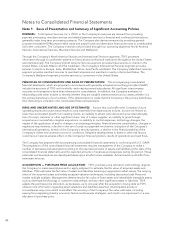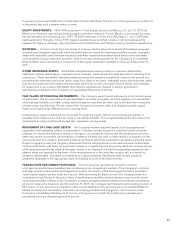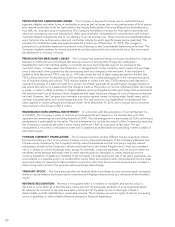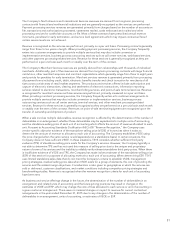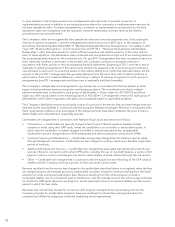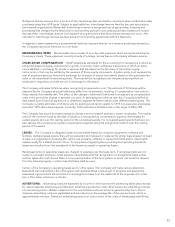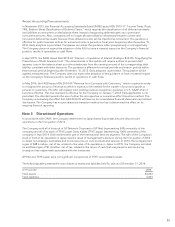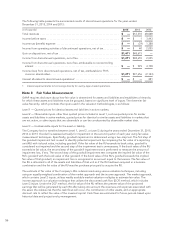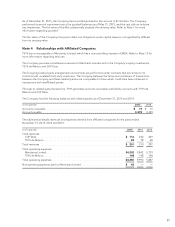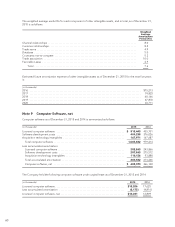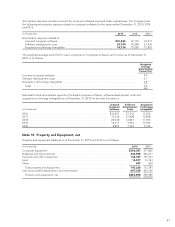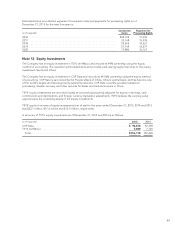NetSpend 2015 Annual Report Download - page 57
Download and view the complete annual report
Please find page 57 of the 2015 NetSpend annual report below. You can navigate through the pages in the report by either clicking on the pages listed below, or by using the keyword search tool below to find specific information within the annual report.NetSpend derives revenue from a portion of the interchange fees remitted by merchants when cardholders make
purchases using their GPR cards. Subject to applicable law, interchange fees are fixed by the card associations
and network organizations (Networks). Interchange revenue is recognized net of sponsorship, licensing and
processing fees charged by the Networks for services they provide in processing purchase transactions routed
through them. Interchange revenue is recognized during the period that the purchase transactions occur. Also
included in interchange revenue are fees earned from branding agreements with the Networks.
In regards to taxes assessed by a governmental authority imposed directly on a revenue producing transaction,
the Company reports its revenues on a net basis.
REIMBURSABLE ITEMS: Reimbursable items consist of out-of-pocket expenses which are reimbursed by the
Company’s clients. These expenses consist primarily of postage, access fees and third party software services.
SHARE-BASED COMPENSATION: GAAP establishes standards for the accounting for transactions in which an
entity exchanges its equity instruments for goods or services. It also addresses transactions in which an entity
incurs liabilities in exchange for goods or services that are based on the fair value of the entity’s equity
instruments or that may be settled by the issuance of those equity instruments. A public entity must measure the
cost of employee services received in exchange for an award of equity instruments based on the grant-date fair
value of the award (with limited exceptions). That cost will be recognized over the period during which an
employee is required to provide service in exchange for the award.
The Company estimates forfeitures when recognizing compensation cost. The estimate of forfeitures will be
adjusted by the Company as actual forfeitures differ from its estimates, resulting in compensation cost only for
those awards that actually vest. The effect of the change in estimated forfeitures is recognized as compensation
costs in the period the change in estimate occurred. In estimating its forfeiture rate, the Company stratified its
data based upon historical experience to determine separate forfeiture rates for the different award grants. The
Company currently estimates a forfeiture rate for existing stock option grants to TSYS non-executive employees,
and other TSYS share-based awards. Currently, TSYS estimates a forfeiture rate in the range of 0% to 8%.
The Company has issued its vested awards to directors and nonvested awards to certain employees. The market
value of the common stock at the date of issuance is recognized as compensation expense immediately for
vested awards and over the vesting period of the nonvested awards. For nonvested award grants that have pro
rata vesting, the Company recognizes compensation expense using the straight-line method over the vesting
period of the award.
LEASES: The Company is obligated under noncancelable leases for computer equipment, software and
facilities. As these leases expire, they will be evaluated and renewed or replaced by similar leases based on need.
A lease is an agreement conveying the right to use property, software or equipment (land and/or depreciable
assets) usually for a stated period of time. For purposes of applying the accounting and reporting standards,
leases are classified from the standpoint of the lessee as capital or operating leases.
Rental payments on operating leases are charged to expense over the lease term. If rental payments are not
made on a straight-line basis, rental expense nevertheless shall be recognized on a straight-line basis unless
another systematic and rational basis is more representative of the time pattern in which use benefit is derived
from the leased property, in which case that basis shall be used.
Certain of the Company’s operating leases are for office space. The Company will make various alterations
(leasehold improvements) to the office space and capitalize these costs as part of property and equipment.
Leasehold improvements are amortized on a straight-line basis over the useful life of the improvement or the
term of the lease, whichever is shorter.
ADVERTISING: Advertising costs are expensed as incurred or the first time the advertising takes place except
for direct-response advertising and television advertising production costs. Direct-response advertising consists
of commission paid to affiliate marketers for the new funded customer accounts generated by them. Direct-
response advertising costs are capitalized and amortized over the average life of the new accounts, which is
approximately one year. Television advertising production costs consist of the costs of developing and filming
53





